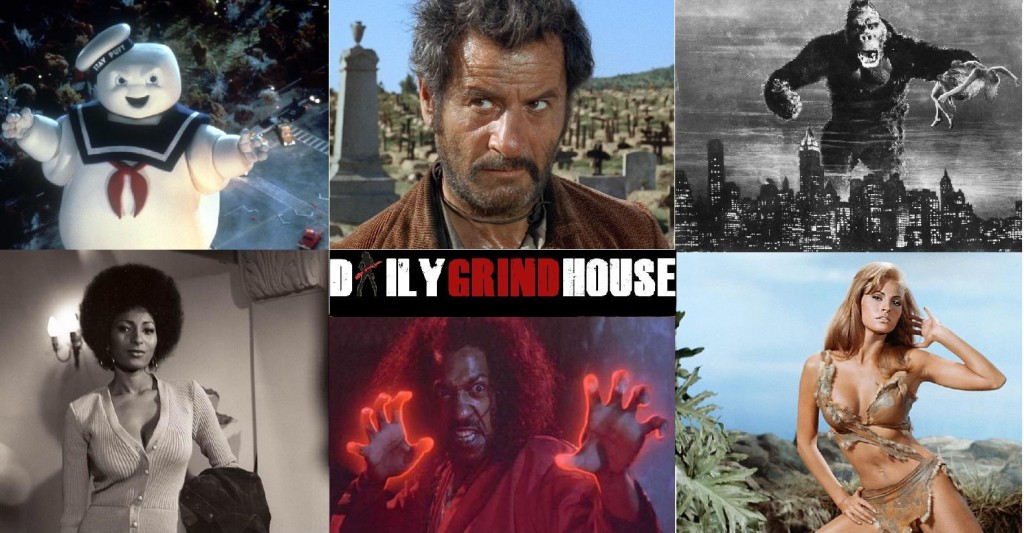
Here it is. Here we are. The moment of truth. But first —
Click here for #50 through #41.
Click here for #40 through #31.
Click here for #30 through #21.
Click here for #20 through #11.
And now…
DAILY GRINDHOUSE’S
TOP 10 MOVIE CHARACTERS OF ALL TIME!
10. King Kong
The Movie: KING KONG (1933)
Played By: Stop-Motion Animation!
On Skull Island, he was a king. In New York City, he was just another guy brought low by love. This may make me sound crazy, but I strongly believe there’s a case for KING KONG as the great American film. If you, as I do, are convinced that the story of America is one driven by race and by sex, then KING KONG has it all over CASABLANCA, CITIZEN KANE, or VERTIGO as far as tangible cultural relevance. The racial and sexual subtext of KING KONG is barely subtext at all, perhaps uncomfortably. Perhaps that kind of subtext should be uncomfortable. Is the subtext here outright racist? I’ve thought about it a lot, and I’m still not even sure. In this particular country, with our history, it’d be irresponsible not to consider it. That reading of the film might depend upon one’s reading of the title character, though. How are we supposed to view King Kong? Unlike Godzilla, King Kong isn’t exactly a hero. As the Godzilla films progressed, it became more clear Godzilla was here to protect Earth, not just to stomp on Tokyo. (That’s one thing last year’s GODZILLA got right for sure.)
King Kong, by contrast, is more of a basic-cable anti-hero. He’s a merciless killer, if you’re a Tyrannosaurus Rex or a military biplane pilot or just an adventurer with a gun, but he’s great at it, and here in America we forgive a lot from a character who’s good at his job. Besides that, King Kong is infatuated with the blond ingenue Ann Darrow (Fay Wray), and America does enjoy a good crazy-in-love story too. King Kong’s cataclysmic talent for violence makes him awesome — in the textbook definition, not the colloquial — and his infatuation with the pretty lady makes him human. So to answer the question, I think we’re supposed to find King Kong to be pretty rad, despite how many guys he tosses off a log bridge, and that’s what makes the movie complicated and fascinating. But that’s a conclusion that’s sort of unnecessary to intellectualize — I could have told you King Kong was awesome (in the colloquial sense) when I was eight. That I’m saying the same thing thirty years later doesn’t mean I haven’t grown up at all — it means I’ve grown up with the movie, and that it continues to give me plenty to think about and to dream about. (Jon Abrams)
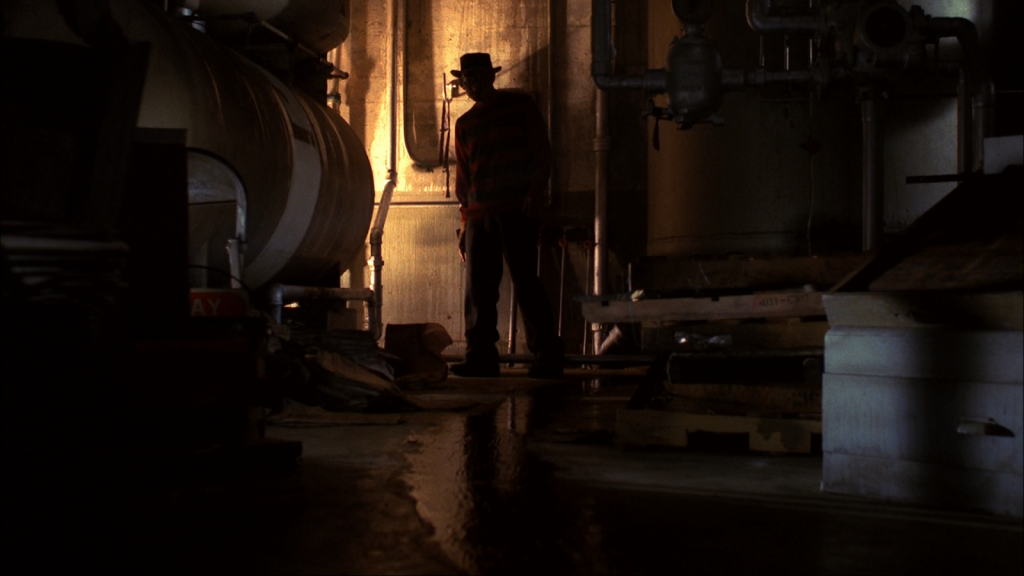
9. Freddy Krueger
The Movie: A NIGHTMARE ON ELM STREET (1984)
Played By: Robert Englund
[Also Nominated By Jeremy Lowe]
Who is your favorite fedora wearing, one-gloved, burn victim, child-molester from the 1980s? If you said Michael Jackson, you’re on the wrong street, little piggy.
Freddy Krueger as a character is quite simple, he is the physical manifestation of the sins of the parents being visited upon the children — perhaps a larger commentary on the mess the Baby Boomers left the MTV generation. As a concept, it’s brilliant — a boogeyman who can attack you in your dreams? You can avoid the old dark house, you can avoid Camp Crystal Lake, you can not mess with Texas… but you have to sleep, and you need to dream.
Wes Craven always intended for 1984’s A NIGHTMARE ON ELM STREET to be a one-shot film, with Nancy vanquishing the demon by simply turning her back on it and consequently taking away all of its power. But something happened — the combination of an iconic outfit, a memorable weapon, and a performance full of personality. Freddy Krueger became a pop culture icon. It can be argued that by 1988, Freddy was as recognizable as Ronald Reagan, Michael Jackson, and Tom Cruise, and possibly more popular than all three. Somehow this brutal child-killer was now being marketed to kids in the form of toys, T-shirts, video games, and even a talking doll. New Line Cinema is often referred to as “The House That Freddy Built.”
How did Freddy become so iconic? It’s a testament to Robert Englund, the actor that portrayed him. Mostly known for television work prior to making his home on Elm Street, Englund’s career was truly born when audiences got a taste of ‘the bastard son of a hundred maniacs.’ Up until Freddy, the popular spree-killers of the time were mutes in masks who hacked up nubile young virgins indiscriminately, but Krueger was different. He had a face — albeit a horribly burnt one — and more importantly, a voice. Freddy always had a certain gallows humor to his kills — tormenting his victims before slashing them with his twisted, metal clawed glove — however, in FREDDY’S REVENGE, audiences were treated to Freddy’s first true one-liner, proclaiming to teenaged Jesse, “You’ve got the body, and I’ve got the brain,” before pulling the skin off of his skull. By DREAM WARRIORS, Freddy Krueger was officially the Henny Youngman of horror. Freddy had personality, and personality goes a long way.
By THE DREAM MASTER, the filmmakers began to sort of whitewash Freddy’s child-murdering past attempting to rebrand the character as more of “a Darth Vader for the ‘80s,” as one reviewer put it. By 1988, Freddy was completely out of the shadows of the dreams and hanging on most kids’ walls, right next to the poster of the girl on the sports car that you got at the book fair. The marketing of Freddy Krueger hit critical mass, and as the 1980s came to a close with 1989s THE DREAM CHILD, Freddy’s popularity began to wane, only to finally be killed off in 1991’s FREDDY’S DEAD: THE FINAL NIGHTMARE. However even as the films tapered off, the legacy of the character remains to this day. There was an attempt to reboot the ELM STREET legacy with Jackie Earl Haley taking up the torch, but it failed miserably, mostly due to one fact — he’s not Freddy.
There are plenty of filmmakers out there who would love to create “the next Freddy Krueger,” and there have been plenty of attempts to varying degrees — Candyman and Pinhead come to mind — but there’s something about Freddy Krueger that is of his era. There was nothing like him before, and there will likely never be anything like him again, because it will just feel like a rip-off of Freddy… and when people simply hear the name “Freddy,” (much like Madonna, Prince, and Beyoncé) they know EXACTLY who you’re talking about. (Mike Vanderbilt)
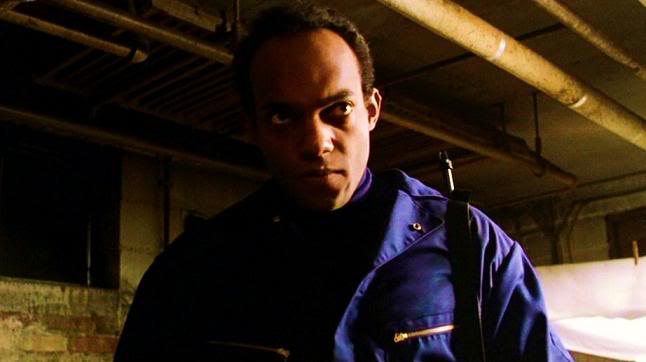
8. Peter
The Movie: DAWN OF THE DEAD (1978)
Played By: Ken Foree
Competent, intelligent, and loyal, Peter is exactly the sort of person you want on your side when the inevitable zombie apocalypse arrives. While the core foursome in George Romero’s DAWN OF THE DEAD are diverse (and thrown together), Peter soon proves himself the most capable of the group — bringing much needed pragmatism to their apocalyptic scenario. While we never discover just what happens to Peter after the events of the movie, I’d like to think he spent many more years chastising flyboys, playing (solo) tennis and dispatching waves and waves of the living dead. (Doug Tilley)
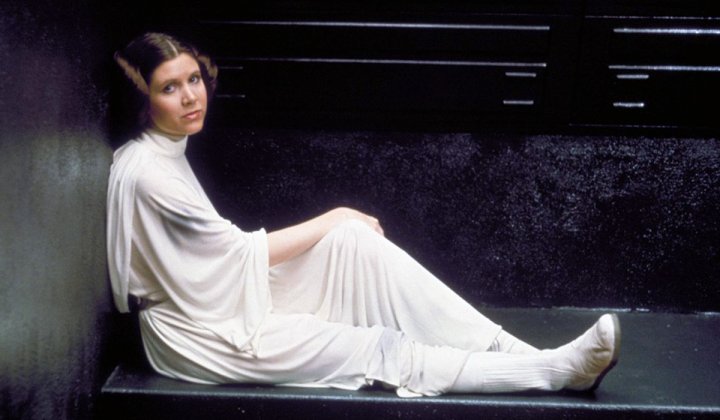
7. Princess Leia
The Movie: STAR WARS (1977)
Played By: Carrie Fisher
Up until this point, princesses in movies were confined to being rescue objects who wore pretty dresses. Princess Leia, a political rebel and activist, didn’t carry flowers — she carried a laser gun and wore pantsuits. The destruction of her home planet left her a little unhinged, so she said ‘fuck it’ and was determined to bring down the Empire. You can’t help but lose your heart a little to a lady who is willing to rage it out, kick ass, and not let space misogynists walk (or slither) off the hook. Status: bad ass and hero. (Tristan Risk)
6. Tuco
The Movie: THE GOOD, THE BAD & THE UGLY (1966)
Played By: Eli Wallach
What’s really fascinating to me about THE GOOD THE BAD & THE UGLY, the more I watch it, is that Eli Wallach (The Ugly) is truly the star of the movie. The movie begins and ends with him, and he seems to have the most screen time by a wide margin. After the respective introductory scenes of The Good (Clint Eastwood) and The Bad (Lee Van Cleef), I don’t think either of them have a single scene in the film that doesn’t also include The Ugly. The Ugly not only has a first and last name, but a ton of middle names (Tuco Benedicto Pacifico Juan Maria Ramirez) AND an alias (a.k.a. The Rat), and he is the only one with the backstory — a life of crime which he started in order to assist his sick parents, which has now alienated him from his brother the priest (classic-Italian-genre-cinema mainstay Luigi Pistilli). Meanwhile, Clint’s character does in fact have a name, even if it’s probably one that Tuco gave him – “Blondie” – and Van Cleef is referred to as “Angel-Eyes” – which is hilarious if it was also given him by Tuco, but either way, it is still an alias. These two guys are flippin’ awesome, striking, and iconic, but they just don’t run as deep.
THE GOOD THE BAD & THE UGLY is really Tuco’s movie. Again, the underrated scriptwriting of Leone and his staff and the accurately-praised career-highlight score of Morricone, along with the cinematography of Tonino Delli Colli, have everything to do with the perfection of THE GOOD THE BAD & THE UGLY, but the importance of the casting of Eli Wallach to the tone of the movie should not be underestimated. He brings a wealth of serious training to the role, but also a go-for-broke sense of humor. There’s a real mischievous sparkle in Tuco’s eye – he’s a quintessential survivor and a classic rogue. Wallach really commits to this role – you couldn’t call him handsome in this movie (although he sure can anchor an extreme close-up), and his accent is as solid as any gringo has ever pulled off. And he’s funny. God DAMN. This movie is so damn funny. Without ever losing its mythic grandeur, it’s riotous. And as much as you and I love them, it ain’t The Bad or even The Good who makes it that way. It’s The Ugly, and he’s a beauty. (Jon Abrams)
5. Ogami Itto
The Movie: LONE WOLF AND CUB: SWORD OF VENGEANCE (1972)
Played By: Tomisaburo Wakayama
There are forces of nature, and there are driven men, and then there is the Shogun’s former executioner. If you come from the manga to the movie version and see Tomisaburo Wakayama as the character, you first say, “No way,” but by the end of the first movie, you can’t imagine anyone else playing the role. Betrayed and hounded by the Yagyu ninja clan, Ogami Itto and his toddler son Daigoro walk “the road to Hell,” wandering the land with a baby cart that hides more weapons than James Bond’s ride. When he’s not slaughtering the endless waves of ninjas trying to kill him, Ogami hires out as an assassin. Every movie ends with Ogami taking on and killing roughly a hundred guys, so he’s pretty good at that. Wakayama plays the role with a perpetual thousand-yard stare and a constant melancholy, rendering him my favorite character I would least like to have a beer or two with.(Freeman Williams)
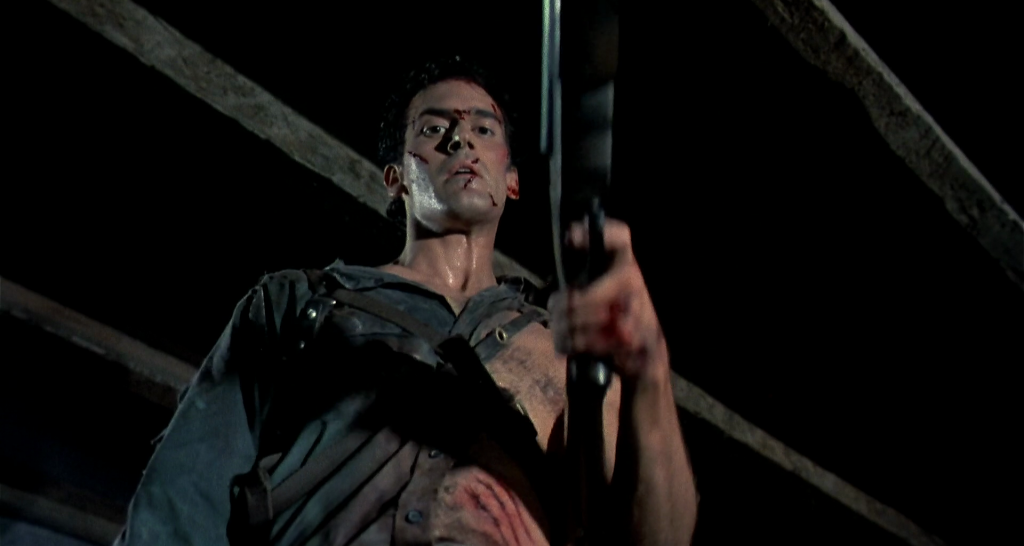
4. Ashley James Williams
The Movies: THE EVIL DEAD (1981)/ EVIL DEAD II (1987)/ ARMY OF DARKNESS (1993)
Played By: Bruce Campbell
While there are numerous monsters and villains to reach iconic status in the horror genre, the same cannot be said for heroes. While Sam Raimi and Bruce Campbell never intended to create a horror hero who would still be battling demons 35 years later (in a TV series, no less), sometimes fate intervenes. Hell, younger fans may not even recall that Ash didn’t become the hero in the first film until the final twenty minutes, spending most of the running time cowering in fear. But when it came time to kick some demon ass, he rose to the occasion and (sort of) succeeded. And that’s the charm of Ash — he is capable of rising to the challenge, but his victories are seldom absolute, and usually very short-lived (otherwise there would be no sequels), because he causes almost as many problems as he solves. Blessed with Campbell’s goofy sense of humor, rubber face, and ability to take painful-looking pratfalls, Ash is the everyman hero who prevails not through intellect (he’s actually pretty dumb), bravery (he would be more than happy to let someone else handle things), or superior physical strength, but through the ability to take a beating and come back for more, until he succeeds. Even the most jaded horror fan can get behind that sort of tenacity. (Matt Wedge)
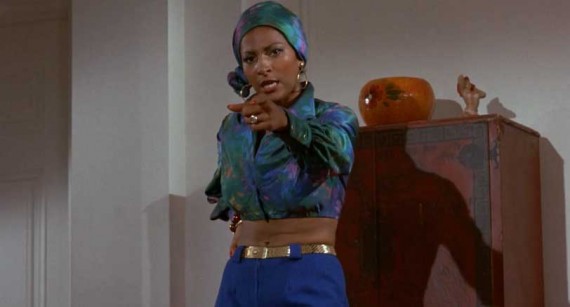
3. Foxy Brown
Pam Grier is so important, she made this list three times. That’s not only because I’m the one with final say — a bunch of the ballots had a Pam Grier role on them! You’ll see, when we post everyone’s individual ballots tomorrow. And besides, you think it was easy for me to edit an entire list without including a Clint Eastwood or a Lee Marvin performance? It wasn’t, but it was easier than having to leave out any of these Pam Grier performances. Pam Grier as Coffy made the list, in her debut as a solo leading lady, and so did Pam Grier as Jackie Brown, in her big comeback role, arguably doing an older and wiser version of the characters she played in her youth. But there could be no excluding Pam Grier as Foxy Brown, maybe her most forceful performance. This is Pam hitting her stride as a star, which again, movies and fate only allowed us to have for half a decade, JACKIE BROWN notwithstanding. And as is evident from the name of that 1997 film, it could never have existed without this one. As wonderfully rough & tumble as Nurse Coffy was as a brutal but beautiful avenger, Foxy Brown is even more organized in her pursuit of vengeance, and possibly less forgiving. She’s more politically-engaged, and more stylish. She humiliates public officials and goes after sadistic whore-mongers in the most emasculating and well-deserved ways possible. Pam named her autobiography Foxy, maybe because it’s the catchier title or maybe because she felt stronger about the role. In the book, she says “Foxy Brown was a fighter and so was I. While my role in COFFY had reminded me on my mother, a nurse who stood up for herself, Foxy Brown was my aunt Mennon, who had a bad temper and was quick to pick a fight.” That comes across in the performances, and righteous anger is evergreen — particularly in 2015 — so at the moment, Foxy Brown is as relevant and as essential as she ever was. (Jon Abrams)
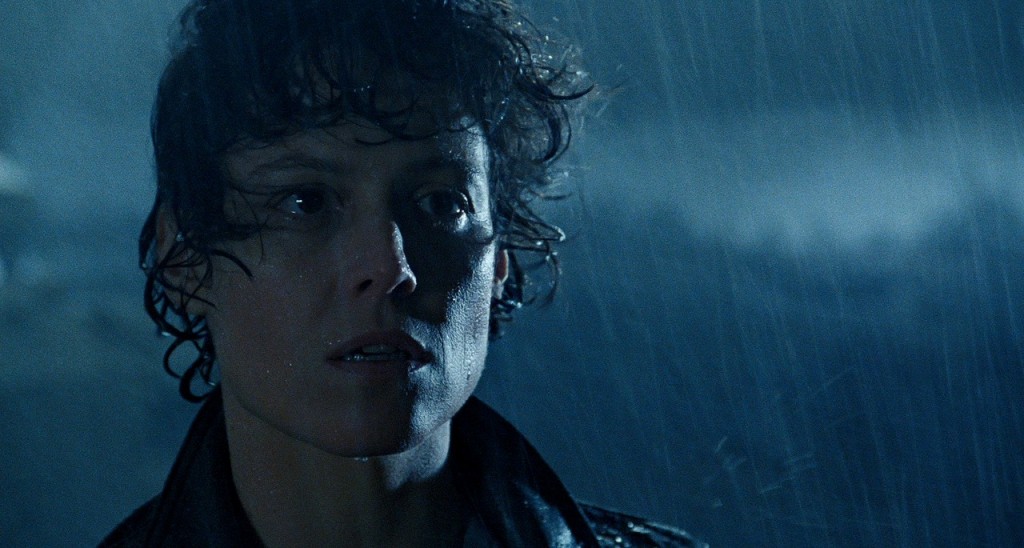
2. Ellen Ripley
The Movie: ALIEN (1978)
Played By: Sigourney Weaver
Quick! Name the character you would want at your back in any given Alien movie! Amazingly competent, the ultimate survivor. I’d marry her, but she’d probably slug me just for asking. How the hell every female character since she appeared has not simply been another version of Ripley puzzles and saddens me. Even a knockoff version would be tougher and cooler than what female-friendly action-film fans are routinely denied. Credit Sigourney Weaver’s acting chops for presenting such a well-rounded, believable character that is never strident, foolish for the right reasons, takes charge, and just happens to be a woman. Hollywood, why is this so difficult? (Freeman Williams)
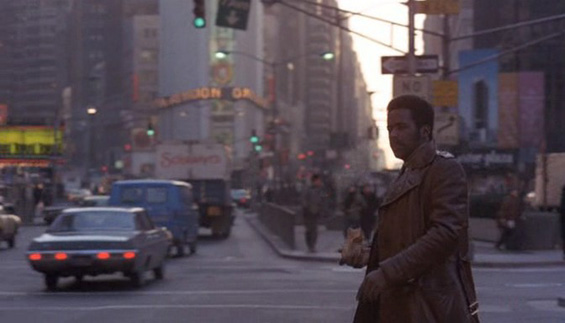
1. John Shaft
The Movie: SHAFT (1971)
Played By Richard Roundtree
[Also Nominated By Ryan Carey]
The man who launched a genre, John Shaft, created by Ernest Tidyman, is one of the great characters in pop culture, and by a wide margin one of the most under-acknowledged and underestimated. The character, first and foremost, is cool. He was created by Ernest Tidyman to be the black version of Ian Fleming’s James Bond. Instead of a world-travelling super-spy, he’s a private detective in Harlem. Many lists claiming to nominate the greatest film characters of all time would and have included James Bond, which is certainly understandable, but John Shaft, as a black man in early-1970s New York City, is just plain more culturally relevant to America — and still could be today, for the record. James Bond flies around the globe in state-of-the-art vehicles with state-of-the-art weaponry. John Shaft has only his fists, and occasionally a gun. He cuts a more modest figure, maybe, but he’s got an attitude bigger than any other big-screen franchise hero. His attitude, in a way, is his superpower. And not to undermine the importance of saving the world, as James Bond so regularly does, but John Shaft saves individual people, one at a time (sometimes one per movie). James Bond, like so many other movie heroes, is the one handling the news on the front page of the Times. John Shaft cares about the things that happen on page A-26, if they even make the papers at all. And unlike Bond, he isn’t unflappable. He can get flapped. In fact, Shaft is pissed-off most of the time. It’s sort of his default setting.
It’s possible John Shaft as a character has never quite been allowed to fulfill his potential. The seven Shaft novels have been out of print for decades (although encouragingly, they may soon be re-issued); the three SHAFT films are more often — and unfairly — used as hacky punchlines and tired pop-culture references, at best overshadowed by the obvious brilliance of the iconic score by Isaac Hayes; the series of CBS-TV movies in the mid-1970s was short-lived; and the killer comic book series released earlier this year from Dynamite Entertainment, written by David Walker and drawn by Bilquis Everly, was compelling, moving, and very literally flawless, but may suffer being overlooked due to a particularly strong and competitive era for comics. Anyway, go buy that comic book. We need more.
But we’re talking about Shaft as a film character here, and as a film character, he is tough to top. Working from a script by Ernest Tidyman himself, the great photographer Gordon Parks directed the first two SHAFT films (we’ll set aside SHAFT IN AFRICA for now), and particularly the first film captures New York in all its gravelly urgency and roiling moodiness. Of course a pressure-cooker town like New York would produce a guy as cranky as John Shaft. Honestly, he’s kind of a dick. Now, that’s great fun on the page, but an onscreen leading man needs more balance. That’s where perfect casting comes in. The promotional materials at the time announced that John Shaft would be “Hotter Than Bond” and “Cooler Than Bullitt.” Understand what that sales pitch is saying: They’re promising you that this guy is as charming as 1960s Sean Connery and as suave as Steve McQueen. It’s an impossible task, yet Richard Roundtree delivers. Obviously he’s a striking, good-looking dude and an imposing-enough figure to be believable as a top-flight shit-kicker, but that’s not what makes Richard Roundtree as John Shaft so special. His every line, no matter how rude, is in this brilliant performance served up with half a smirk, as if the guy is having fun, even if he’s having fun being a total dick. Even so, you never lose the sense that he cares — a lot — about whatever case he’s working on at the time. If New York is the greatest city in the world, then John Shaft is the greatest fictional New York hero, outside of Spider-Man. But Shaft gets to say bad words, so he takes that title too. (Jon Abrams)
So that’s our top fifty! Surprised? Shocked? Horrified? Delighted? Let us know below!
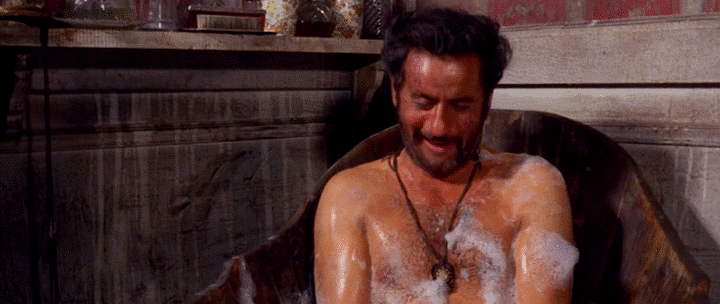
- [THE BIG QUESTION] WHAT’S YOUR FAVORITE FEMALE ENSEMBLE IN MOVIES? - July 22, 2016
- [IN THEATERS NOW] THE BOY (2016) - January 24, 2016
- Cult Movie Mania Releases Lucio Fulci Limited Edition VHS Sets - January 5, 2016
Tags: Bruce Campbell, Carrie Fisher, Cats, Eli Wallach, George A. Romero, George Lucas, Jack Hill, Ken Foree, Lists, pam grier, Robert Englund, Sam Raimi, Sergio Leone, sigourney weaver, Tomisaburo Wakayama, Wes Craven, Willis O’Brien

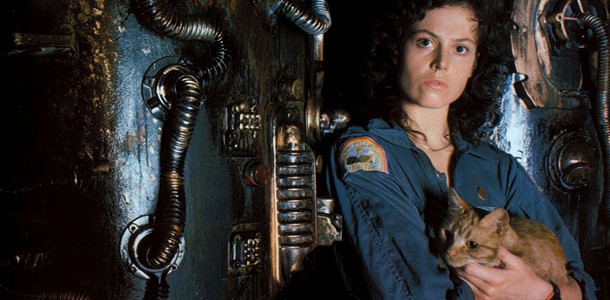

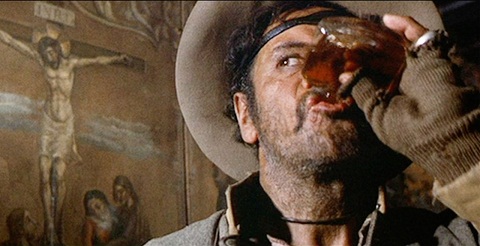
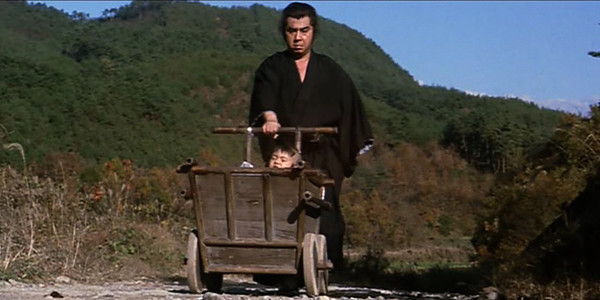
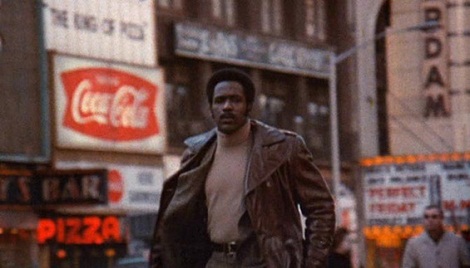




No Comments